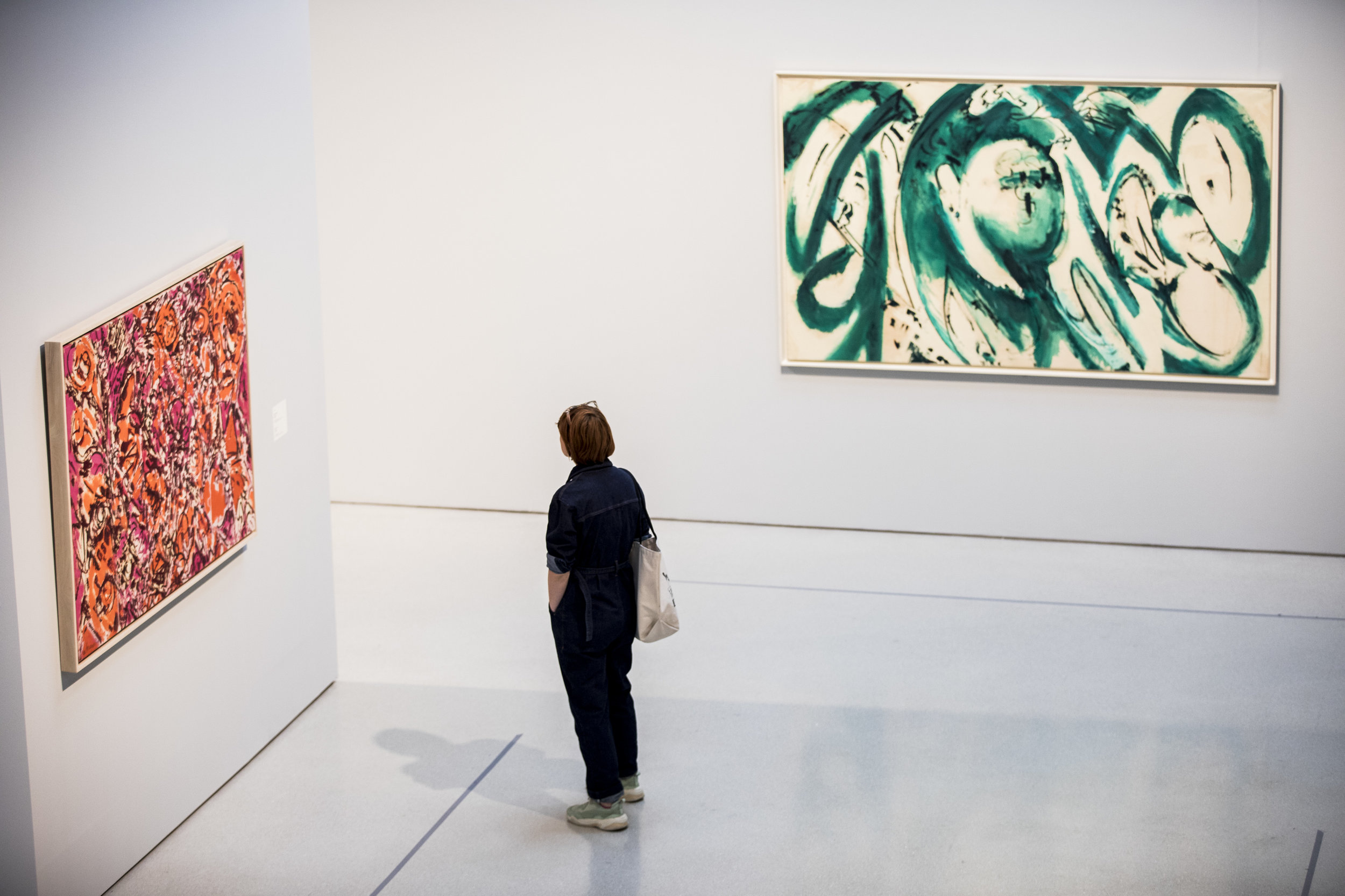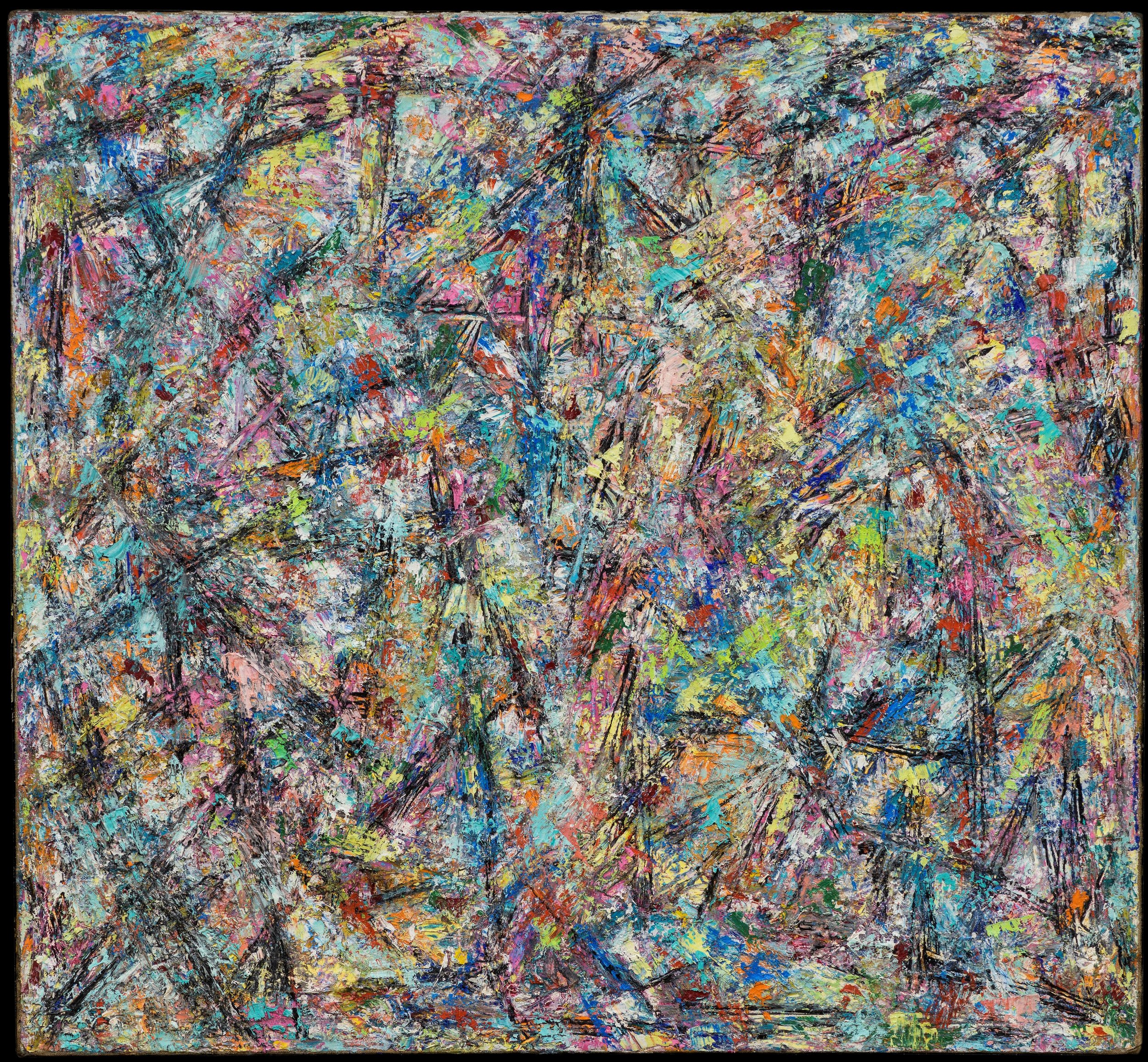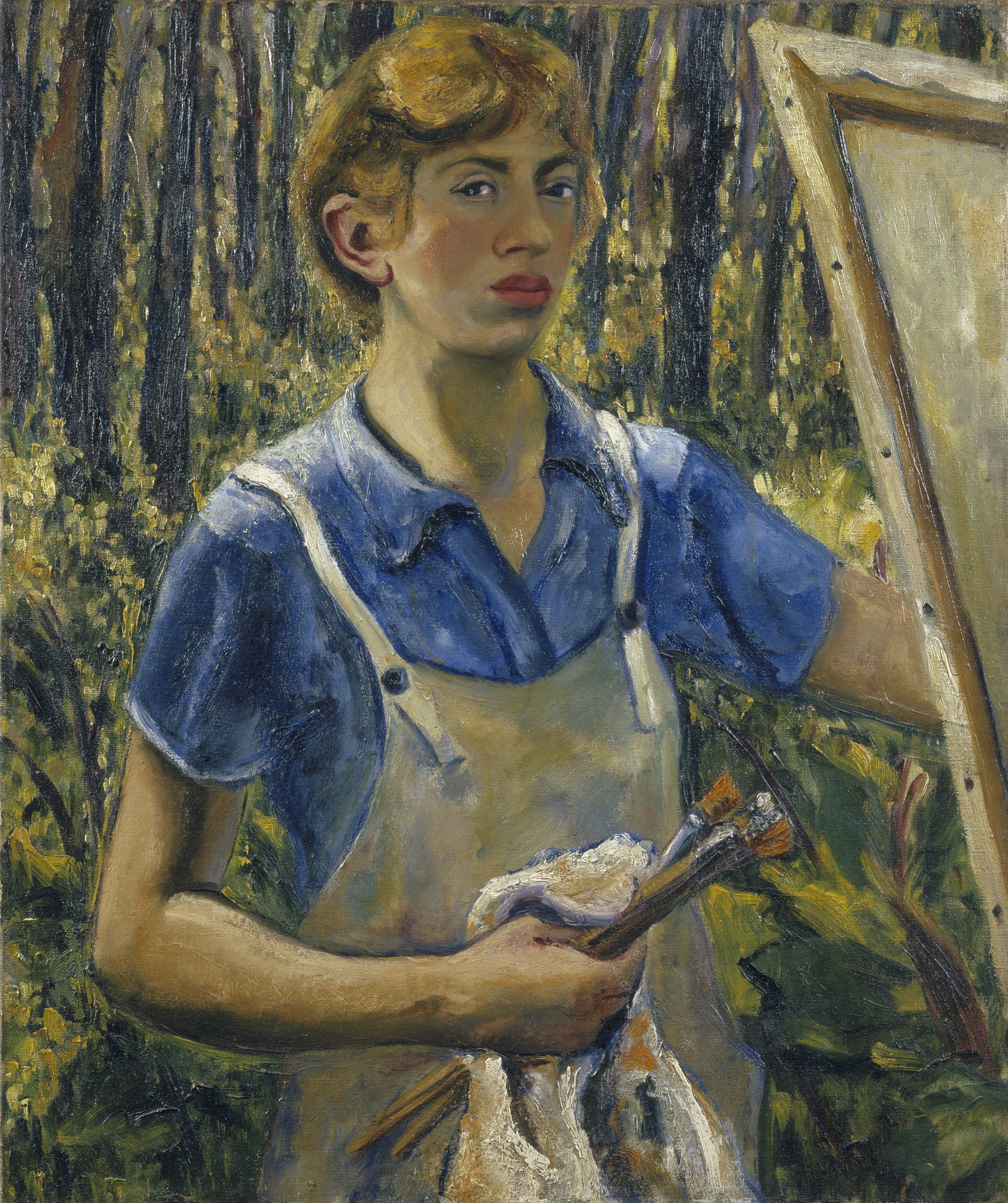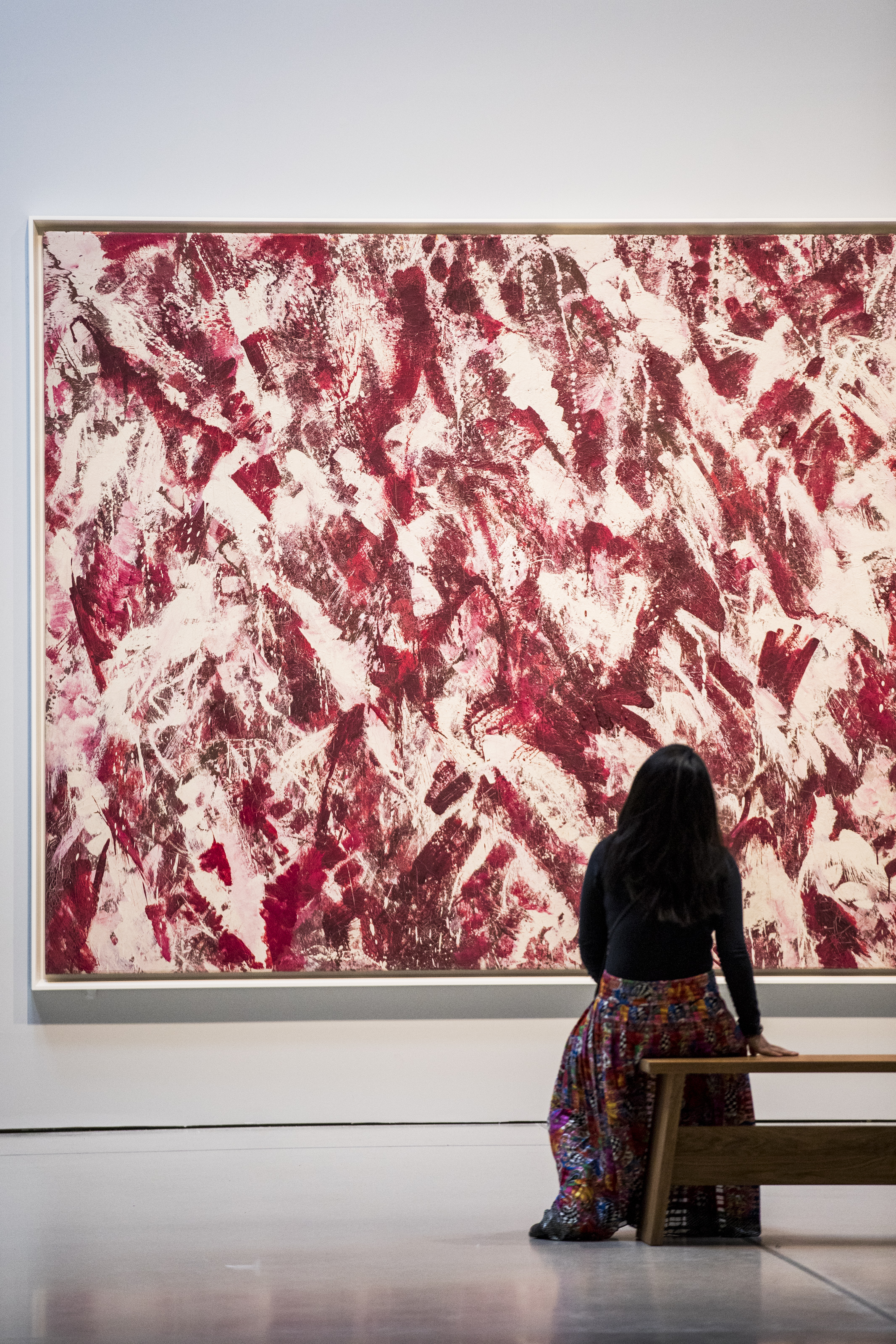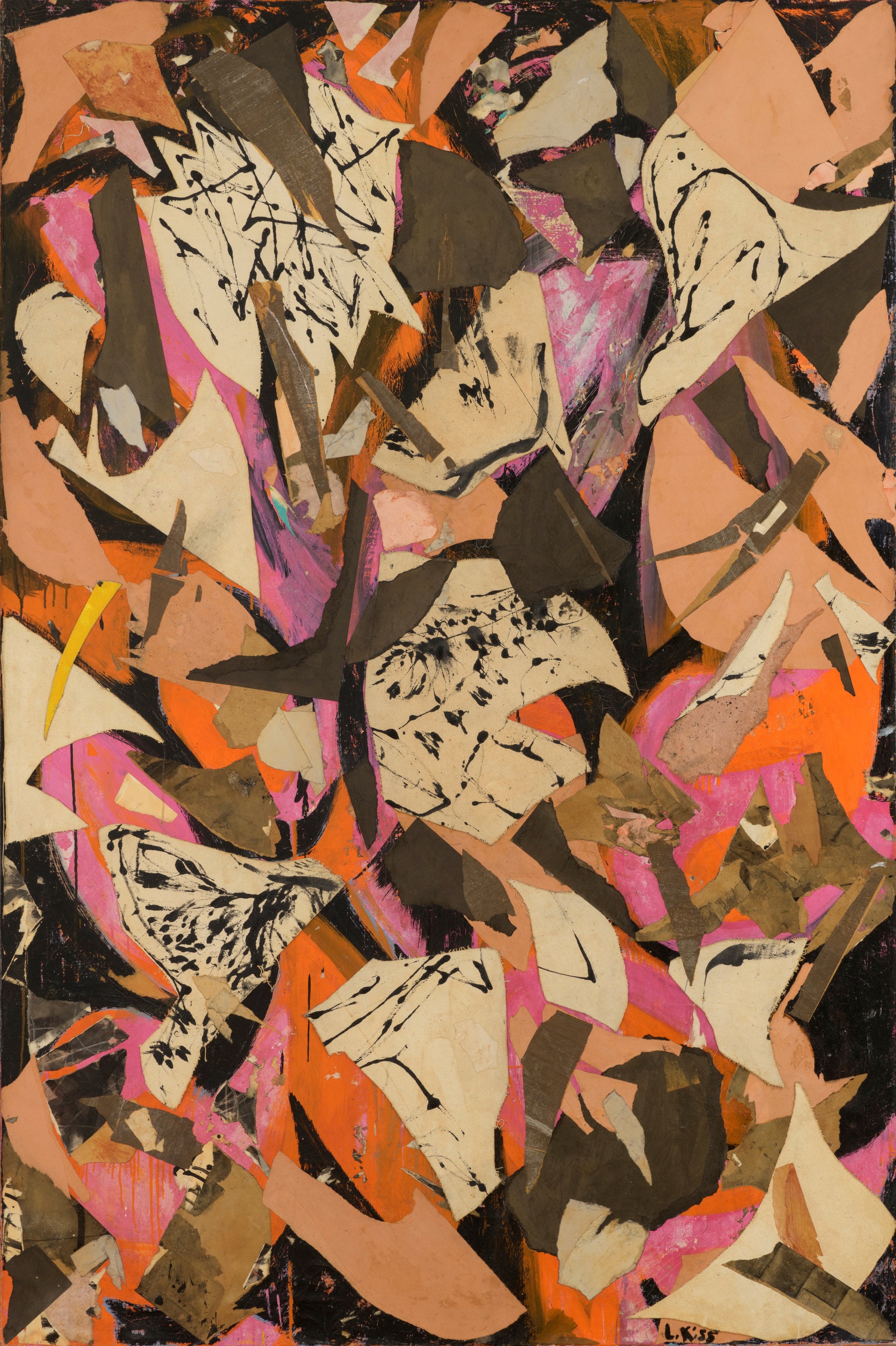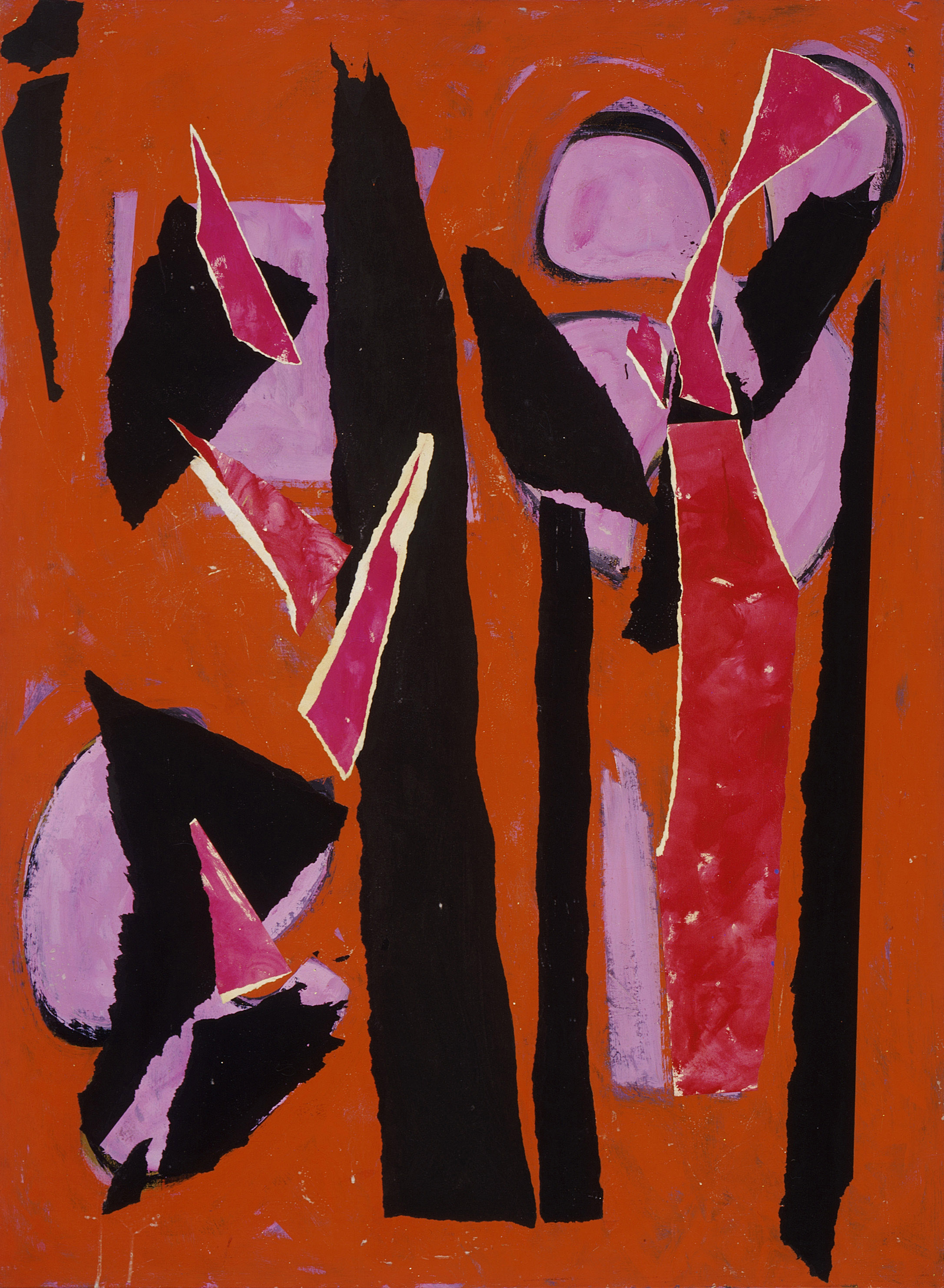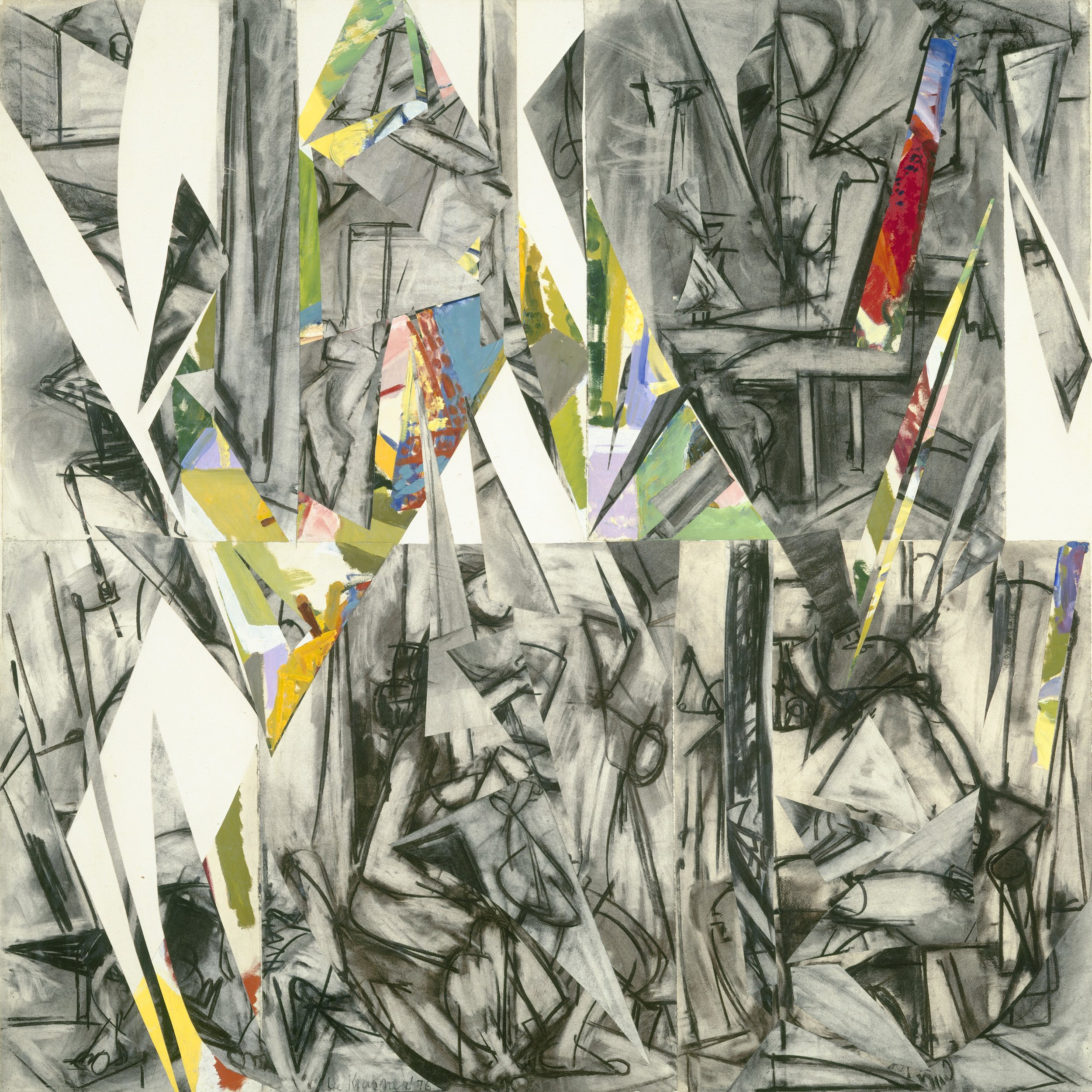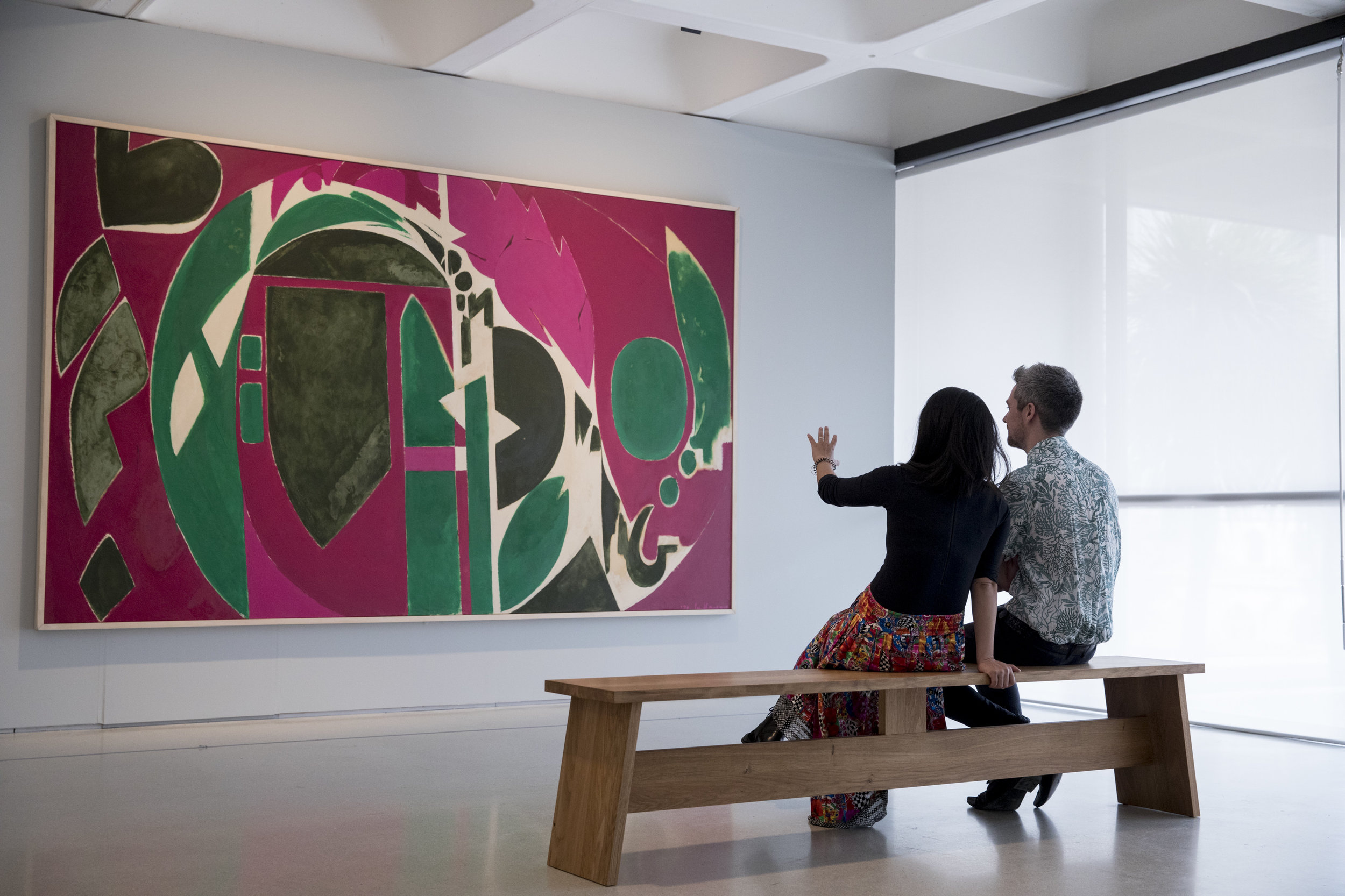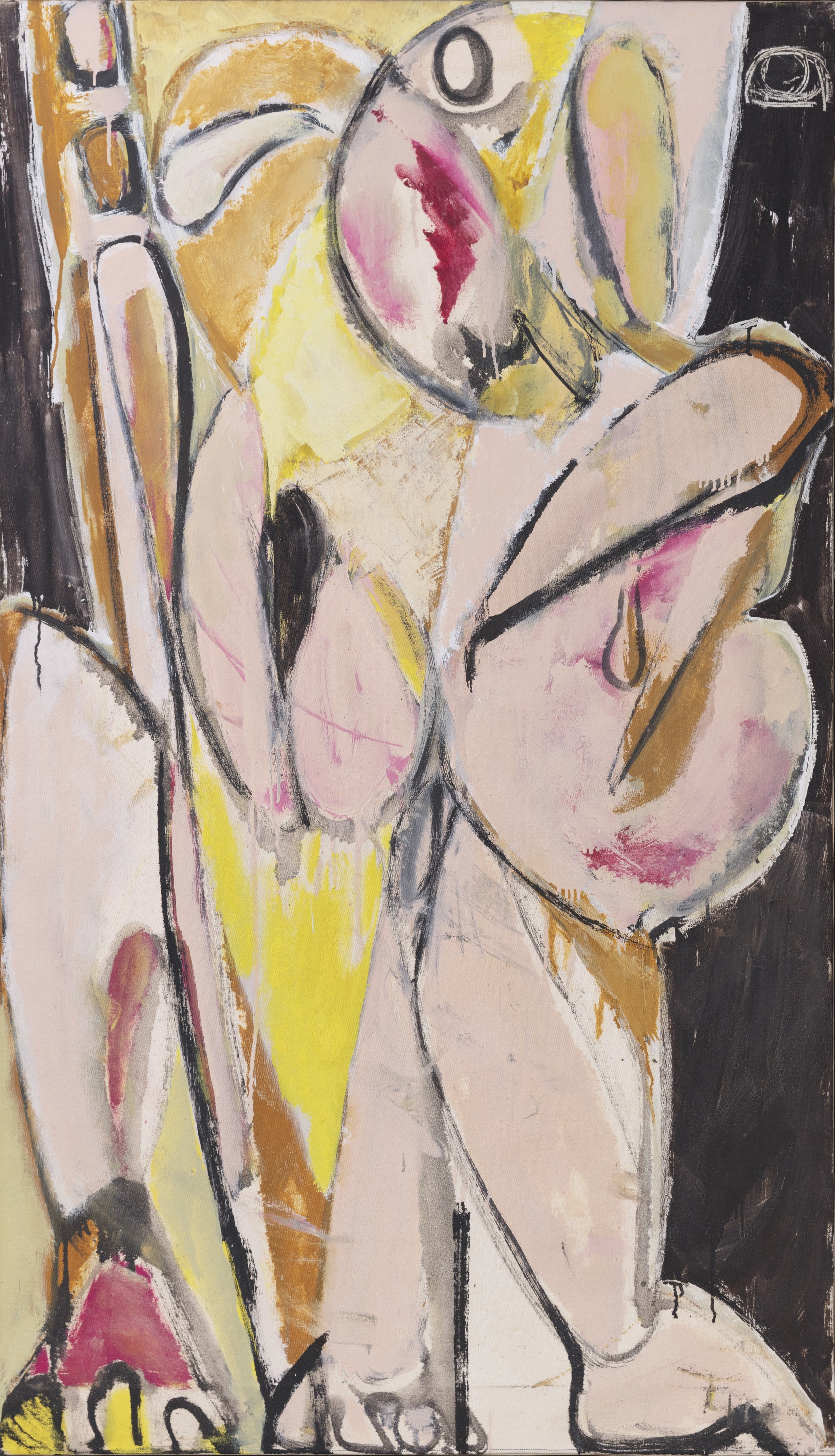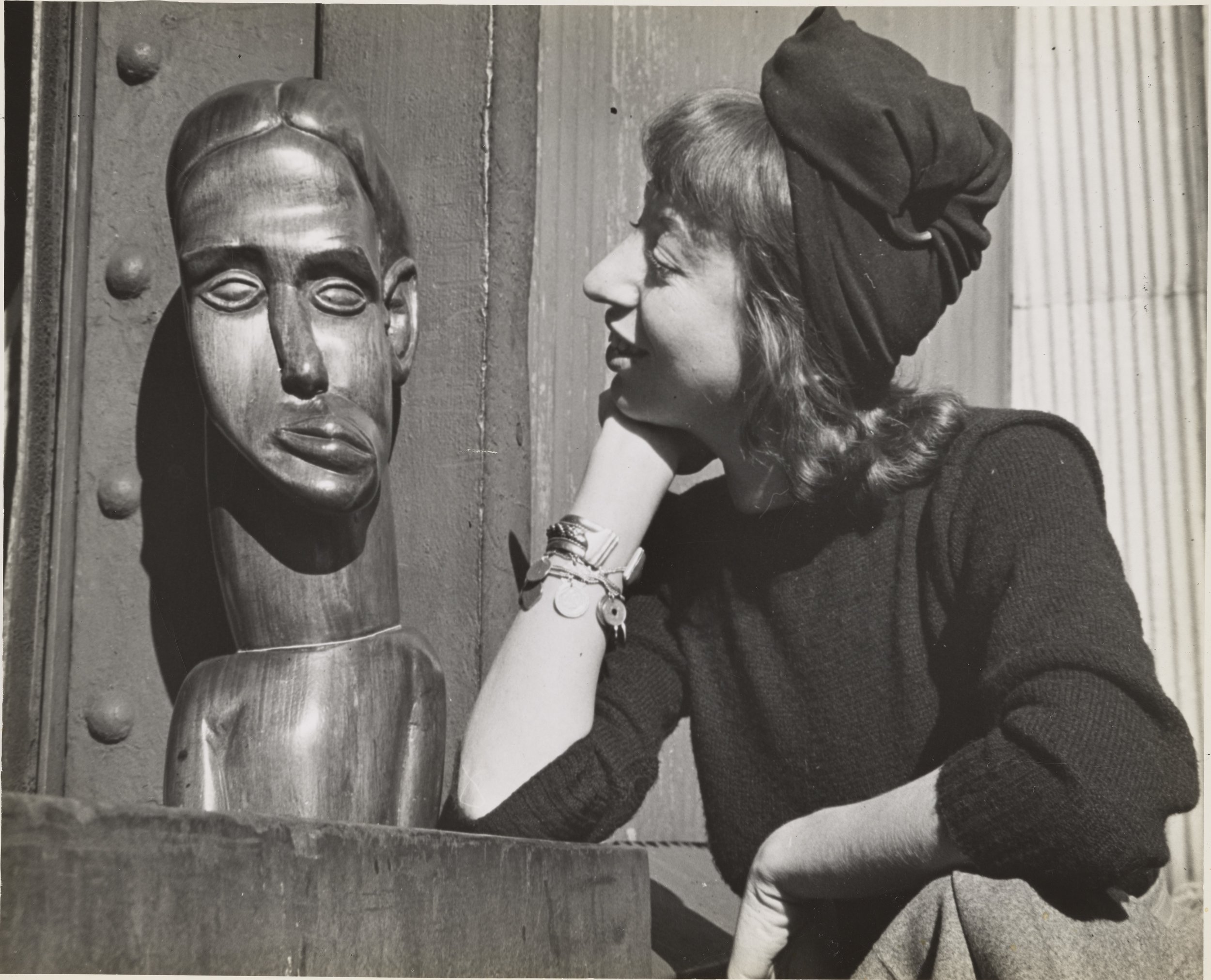Special Guest Star, 2016. Huma Bhabha. Clay, wood, wire, t-shirt, acrylic, tin, paint brush, White Tailed Deer horns, and steel. Overall: 39 3/4 x 94 x 13 3/8 inches. Image credit: Kerry McFate. Courtesy of the artist and David Zwirner Gallery
text by Poppy Baring
The Barbican’s Level 2 gallery reopened in May with a joint exhibition featuring sculptures by Alberto Giacometti and Huma Bhabha. Encounters: Giacometti x Huma Bhabha features works, some of which are nearly a century old, that explore the human figure, the trauma it faces, and the process of survival. This ‘dialogue across time’ allows viewers to examine the artists’ responses to human vulnerability, violence, and displacement, and is the first time Bhabha has exhibited her work at a public London gallery.
The entrance upon arrival is currently home to four titan-aged bronze sculptures made by Bhabha. Debuted in New York last year, where the artist currently lives, these figures are being displayed in Europe for the very first time. Continuing inside, visitors encounter “The Glade” (Composition with nine figures), created in 1950 by Giacometti, a small tabletop sculpture that marked a significant shift in Giacometti’s practice. These supremely thin, isolated figures were created to capture people as they were, vulnerably themselves, on the street.
Alberto Giacometti holding Three Men Walking, 1940s, Photo: anonymous, Silver print on paper, 11.9 x 17.2 cm, Archives Fondation Giacometti. © Succession Alberto Giacometti / Adagp, Paris 2024
Giacometti’s observation of individuals “coming and going...unconscious and mechanical... each having an air of moving on its own, quite alone,” inspired how Bhabha approached the composition of the exhibition. She sets sculptures up as groups and allows visitors to potentially cross paths with these works, as though the space were a public street, bringing a sense of life and interaction to the statues. The message becomes progressively clearer, as phantom-like, vulnerable figures gradually replace fragmented works. Collectively, both these artists’ work point to conflict and highlight its effects as human life becomes increasingly disfigured.
This exhibition is entirely suited to the Barbican. As far as Giacometti is concerned, he made some of his most significant pieces at the same time as the Barbican was under construction. Art and architecture made in this post-war period are often considered a response to the brutality of the Second World War, and both Giacometti’s work and the gallery, at that time, proposed a new (not so fresh) perspective on what it means to live and be human. The non-materialisticness of the work and the space that surrounds it creates a mass of meaningful beauty that explores a way of thinking where art is deemed crucial to living.
The Encounters: Giacometti x Huma Bhabha exhibition is on view through August 10th 2025 at the Barbican, Silk Street, London, EC2Y 8DS.
What Should it Be, 2024, Huma Bhabha. Painted and patinated bronze and concrete pedestal. 44 3/4 x 31 x 31 inches. Photo credit: Kerry McFate. Courtesy of the artist and David Zwirner Gallery

